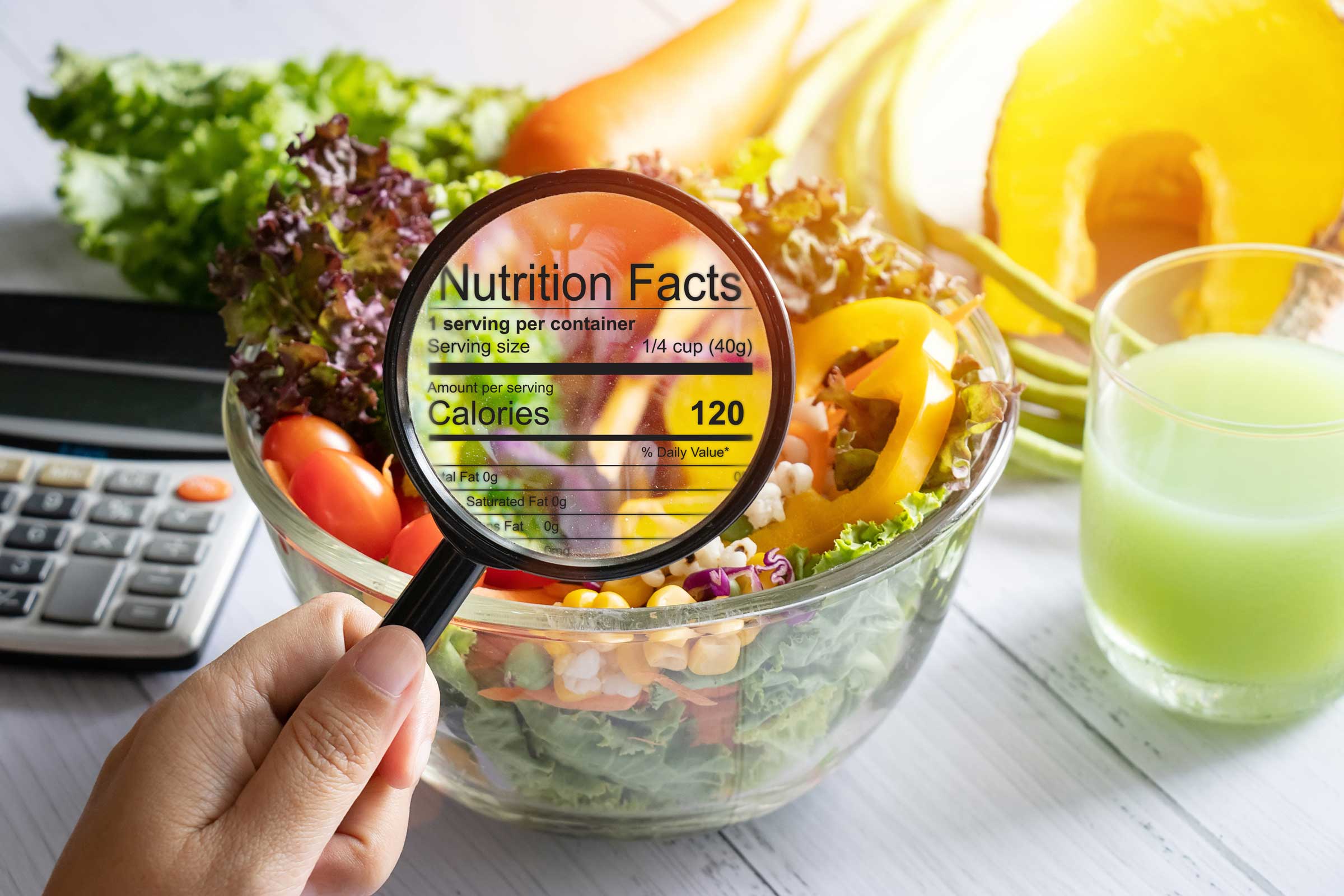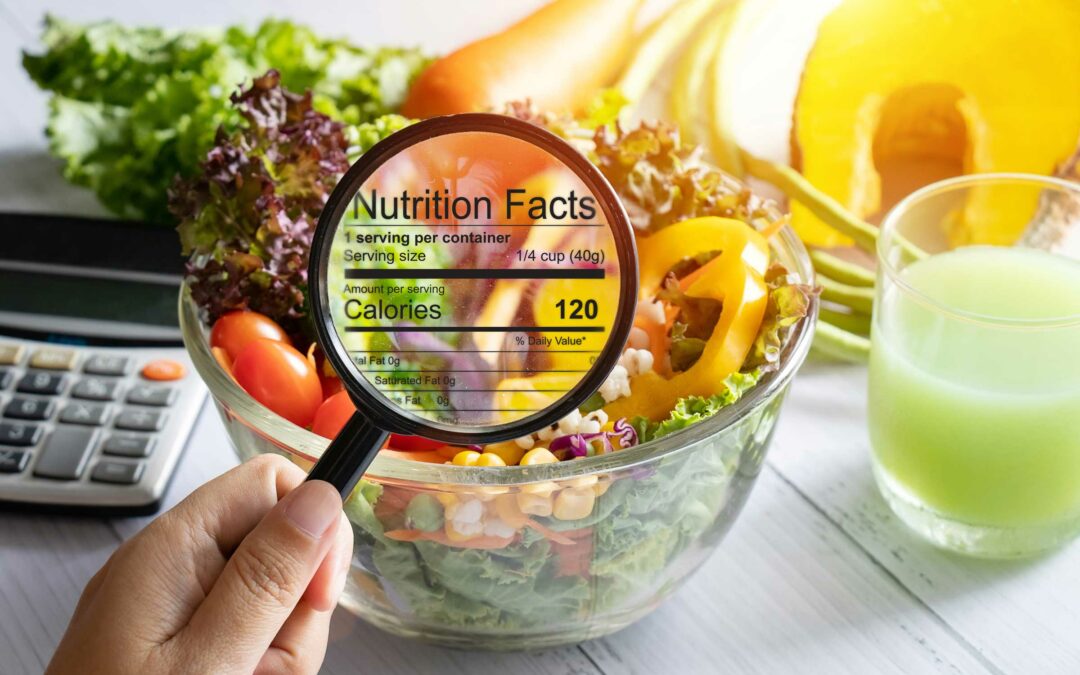
How to Read Food Labels for Weight Loss
Reading nutrition labels can be challenging, especially when you want to choose the best food option for your health and weight-loss goals. In this article, we will guide you through the basics of reading nutrition labels and provide helpful tips on how to make informed choices.
Identify Serving Size and Calories
It’s easy to consume more than that if you’re unaware of what constitutes a single portion. Remember that consuming too many servings can lead to excess calorie intake, which may cause weight gain or hinder your progress toward reaching your wellness goals.
To accurately track consumption, multiply all nutritional information by the number of servings eaten. This gives you an overview of the actual nutrient values consumed per meal or snack item. Remember that each individual has varying nutritional needs based primarily upon factors like age, activity level, and genetic makeup, among others.
Consulting with qualified professionals will help determine the ideal daily caloric intake necessary for optimal health results while meeting personal fitness objectives, considering unique preferences and dietary restrictions. So, always consult an experienced registered dietitian when in doubt.
Check for Nutrient Content
Pay close attention to these key nutrients: protein, fiber, and healthy fats. Protein helps build muscle mass while keeping you full between meals.
Good protein sources include lean meats, fish, dairy products, or plant-based alternatives like beans. Fiber is essential for maintaining digestive health and promoting satiety. It also assists in managing blood sugar levels.
Comparing two similar items’ fiber contents will guide you in making the healthier choice. Healthy fat sources come from unsaturated fatty acids found in olive oil, avocados, almonds, and walnuts.
Consuming an optimal amount can lower LDL cholesterol and promote heart health. These should be incorporated moderately into your daily routine to avoid excess caloric intake, which still leads to weight gain if consumed in large quantities. Check for hydrogenated or partially hydrogenated oils in the ingredient list. They contain trans fats, which negatively impact the cardiovascular system.
Know Your Macronutrients
Incorporate high-quality protein sources such as poultry, fish, beans, or legumes into each meal for optimal results. Carbohydrates act as the primary energy source for everyday activities and workouts, and they also aid recovery after exercise sessions. Choose whole grains like brown rice or quinoa, along with fruits and vegetables, to provide the essential fiber that promotes digestion.
Focus on healthy options, including avocados, nuts and seeds (almonds and walnuts), olive oil, and coconut oil, as well as cold-water fatty fish (salmon and tuna). Healthy fats support cellular function, hormone regulation, and the absorption of fat-soluble vitamins A, D, E, and K, contributing positively to proper brain and body functioning and significantly boosting weight-loss goals!
Be mindful; moderation is key. Consuming too much fat leads to a rapid increase in calorie intake, which has a negative effect on progress toward and the long-term outcomes of any effort made to lose those unwanted pounds around one’s midsection.
Investigate Hidden Sugars
As you delve deeper into reading food labels, pay close attention to hidden sugars. Food manufacturers often include sugar in their products under various names that may not be immediately recognizable.
Hidden sugars can lead to unwanted calories and hinder your weight-loss journey. Begin by investigating the ingredient list on packaged foods. Look for terms like sucrose, high fructose corn syrup, dextrose, maltose, or other words ending with “ose.” These are all types of added sugars found in many processed goods, such as snacks and condiments.
Keep an eye out also for natural sweeteners like honey, agave nectar, or maple syrup, which still contribute extra calories despite being less refined than traditional sugar sources. When examining a product’s nutrition facts panel, take note of the “Total Sugars” listed. This value includes both naturally occurring sugars (in fruits and dairy) along with any added varieties, contributing towards the overall calorie count.
Compare Product Labels
As you compare product labels to make informed food choices, it’s essential to analyze the nutrient breakdown for each item. Start by evaluating the calories and serving sizes of similar products; opt for those with fewer calories per serving when trying to lose weight.
Next, take a close look at their macronutrient content, specifically protein, healthy fats (unsaturated), and complex carbohydrates. Comparing dietary fiber is another crucial step since higher fiber levels contribute positively to digestion and satiety while facilitating better blood sugar control during meals. Similarly, focus on sodium, as many processed foods are often high in this element, which can impact heart health if consumed excessively over time.
When considering the differences in fat content between the two options, keep an eye out for trans-fats, which are bad news due to their links with elevated LDL (“bad”) cholesterol levels and increasing risks of cardiovascular diseases. But zero in on healthier unsaturated kinds, like monounsaturated or polyunsaturated variants, too, known for boosting HDL (“good”) cholesterol figures, potentially reducing overall odds of falling prey to these menacing ailments down the line! Finally, review the amounts of vitamins and minerals, and don’t forget to check for hidden sugars in hidden forms, e.g., corn syrup, malt, and barley.
Ideally, limit the total consumption of items so that not-too-sweet taste buds are still satisfactorily satisfied. Let wise comparison guide your journey to successful weight loss while remaining ever-vigilant in your label-reading endeavors!
Reading food labels is a great way to keep track of the nutrition your body needs and maintain weight loss. Knowing what ingredients are in each product you consume can help you understand which foods may be hindering progress on your diet plan.
At the Weight Loss Center of Nashville, we understand the challenges of achieving weight loss goals. We offer personalized weight loss plans, including medical weight loss, nutritional counseling, and weight loss surgery options. Our team of experienced professionals will be with you every step of the way, providing guidance, encouragement, and accountability.


